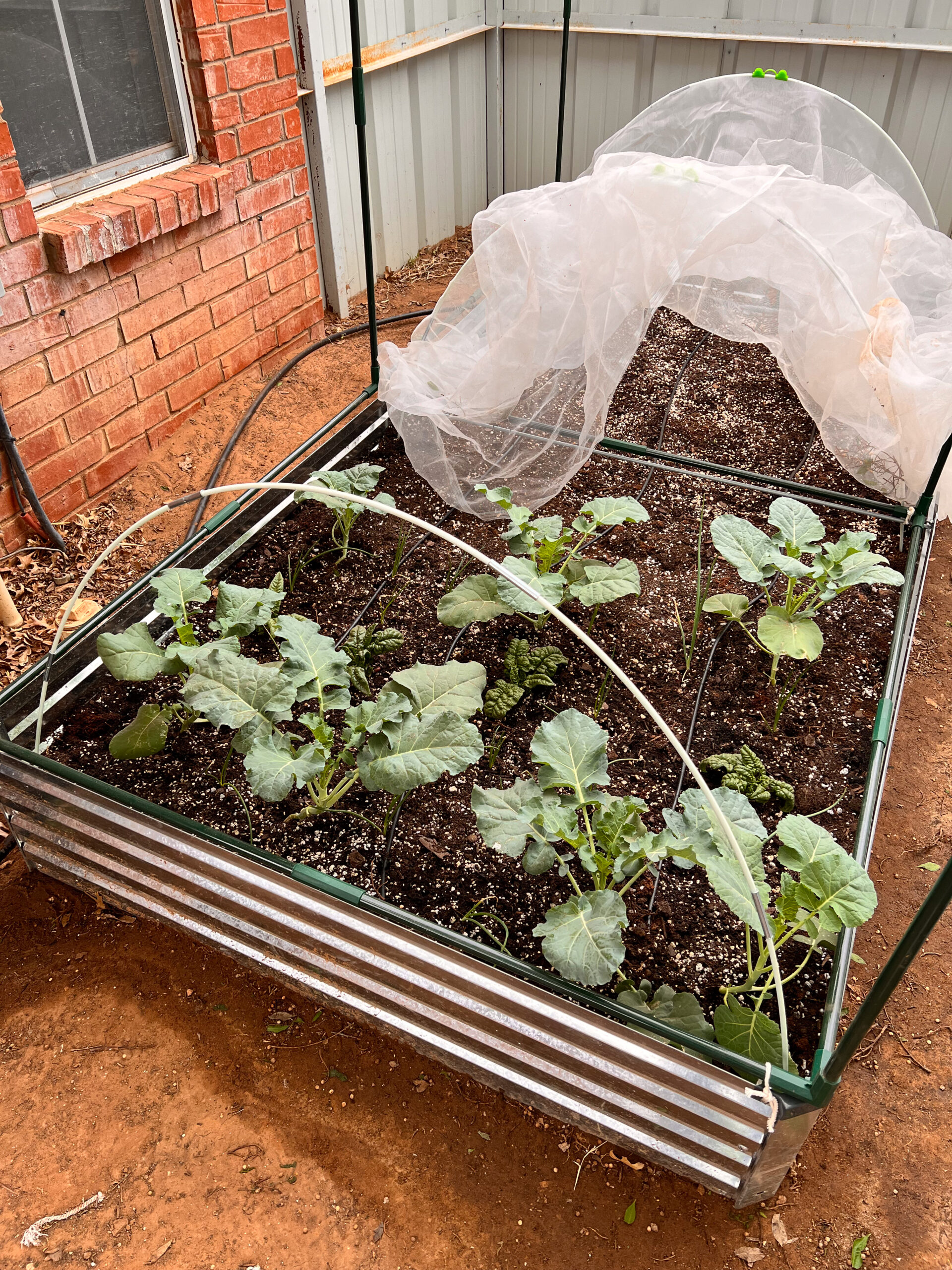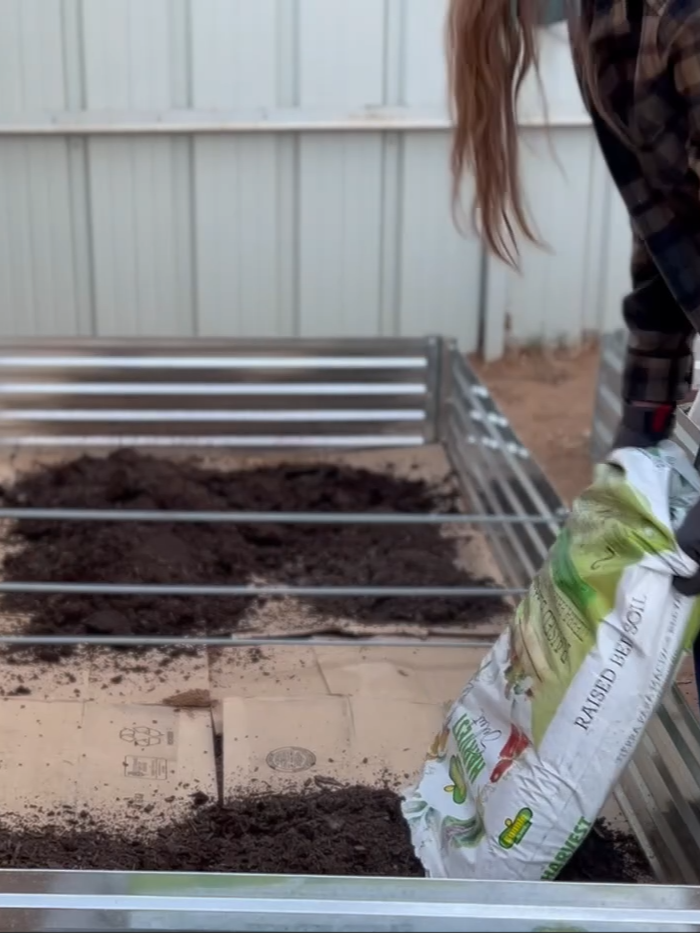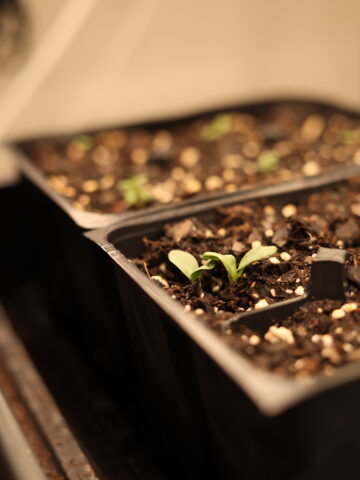This post contains affiliate links. This means I earn a small commission at no cost to you. You can view my affiliate disclosure here.
As you can tell by my latest posts, I've been doing a lot of planning recently for my spring garden. Unfortunately, the recent deep freeze we had has knocked out most of my fall/winter garden, so I have been focusing my efforts on getting ready for spring.
Currently, my main vegetable garden in the back of my house is a small raised bed garden. When I first began constructing my garden last year, I ran into a bunch of challenges including poor soil and not having access to power tools. So I had to come up with creative ways to build the garden I desired.

It honestly is a bit of work if you are starting a garden from scratch. I recommend starting with a few raised beds the first year and then later adding a few more on each year until your garden is at the size you want it.
Where to Put A Raised Bed Garden
If you have the time, I recommend tracking the amount of daylight your yard gets in different locations over the spring to fall months before building your garden. You can do this by taking pictures and making notes of what times of day the sun hits a certain area of your yard.
Throughout the year, the sun will move to more directly overhead in the summer and at an angle (which casts more shadows) in the spring and fall. Also, trees and shrubs will fill out more in the summer and cast shade. Ideally, you want to put your garden in a location that receives "full sun" or at least 6-8 hours of sunlight per day. If you live in a hot climate, you will want to ideally choose a location that receives sun in the morning and shade in the afternoon.
Personally, I live in the south and my backyard garden gets sun most of the day during the summer. I use 40% shade cloth to keep my plants from getting crispy (except for my okra and hot peppers).
Take note of buildings, trees, and other structures that could cast shade over your garden. So typically it is best to put your garden in an open area in your yard. Also, put your garden near your irrigation source.

Orientation of Raised Beds
In the northern hemisphere, the sun's path travels across the southern portion of the sky. This means that when you are planning your garden, you will want your shorter plants on the south end and taller plants (heirloom tomatoes and corn, for example) and trellises on the north end (in general). However you plan your garden, made sure that tall plants and trellises don't cast shade on the rest of the plants.
How you orient your beds is going to depend on the other structures around the garden, where the entrance is, how you want the arched trellises to look, etc.
Raised Bed Materials
There are many options for the materials you can use to build raised beds. Untreated wood is the one of the most aesthetically pleasing options but can be more expensive and has to be replaced every 5-10 years.
Bricks or logs are another option. I don't recommend cinder blocks due to their toxicity, but if you did use them, it would be best to line them.
I use galvanized raised beds due to their durability and ease of assembly. I also appreciate that they came right to my door via Amazon prime shipping! I was able to assemble them by myself with my 10 month old son strapped on me, so they are definitely easy to assemble. I recommend wearing gloves due to the sharp edges.
Raised Bed Height and Spacing
Raised beds should be a minimum of 6 inches tall (I prefer 12 inch tall beds). Two foot or three foot tall beds are ideal for those with limited mobility. Space the beds at least 2-3 feet apart. I personally spaced mine 1 foot apart to fit them in my small space and its a little more challenging to crouch next to my beds (fortunately, I'm small and limber enough to fit in there but it's not something I'd normally recommend).
The width of the raised beds should be no more than 4 feet wide. This will allow you to reach into the middle of the bed from each side. If the bed is against a wall, make sure it is no more than 2 feet wide. The length can be whatever you want it to be as long as you can reach into the middle of the bed.
You don't want to have a bed that is too large to where you will have to step into it to work on your garden. This will compress the soil. My raised beds are 1 foot tall, 4 feet wide, and 8 feet long for reference.

What to Put Under Raised Beds
You can put raised beds on top of poor soil (often that is why people build raised beds) or concrete. However, it's important to make sure that the raised beds have good drainage.
If you have grass or weeds in the location where you are putting your raised beds, I would suggest lining the bottom of the beds with cardboard before adding soil.
If gophers, moles, or other digging animals are a problem where you live, make sure to line the bottom of your beds with hardware cloth. This allows root growth and drainage but keeps the critters out.
How to Fill Raised Beds
If you are building raised beds a few months or more ahead of time, you can put additional organic materials in the bottom of the beds, such as logs, food scraps, leaves, and other materials that will break down over time. Then place some soil overtop. The advantage to this is that it will take less soil to fill your raised beds. This is especially helpful if you have taller raised beds.
Otherwise, if you are going to be planting in the raised beds right away, I would recommend filling your raised beds with a ratio of about 30 % top soil, 40% compost and/or composted manure, and 30% mulch and soil amendments (such as coconut coir for water retention, organic fertilizers, and perlite/vermiculite for aeration). For the mulch, you want to have a few inches on top of your soil.

These are a few things I've used in my garden to fill my beds:
- Coast of Maine: top soil and lobster and crab compost
- Michigan Peat compost and manure
- worm castings (the darkest and richest soil amendment you'll find)
- coconut coir bricks (a more environmentally friendly alternative to peat moss)
- perlite
- straw for mulching (will grow a few grass weeds but it is very minimal)
- Down To Earth all purpose fertilizer ( I use twice per year in the spring and fall before planting) and azomite trace minerals (I use once per year before planting in the spring)
A cost effective option, especially if you have a bunch of raised beds to fill, is to look into bulk compost or a compost/top soil blend in your area. You can also use animal manure as long as it has been composted for at least 6 months and doesn't contain herbicide residue (sometimes animals will feed on weeds or crops that have been sprayed with herbicides and this residue will be present in their waste).
Having a wheelbarrow, face mask, shovel, and gloves can be helpful while filling the beds. I layer in a few different components at a time and then stir as I go. I sprinkle dry organic fertilizer and minerals on the top of the soil close to the time of planting, and I lightly mix them into the top layer of soil.
These are my recommendations for building a raised bed garden especially if you are not handy like me. Hopefully, you are also just as excited about your spring garden as I am.






Comments
No Comments